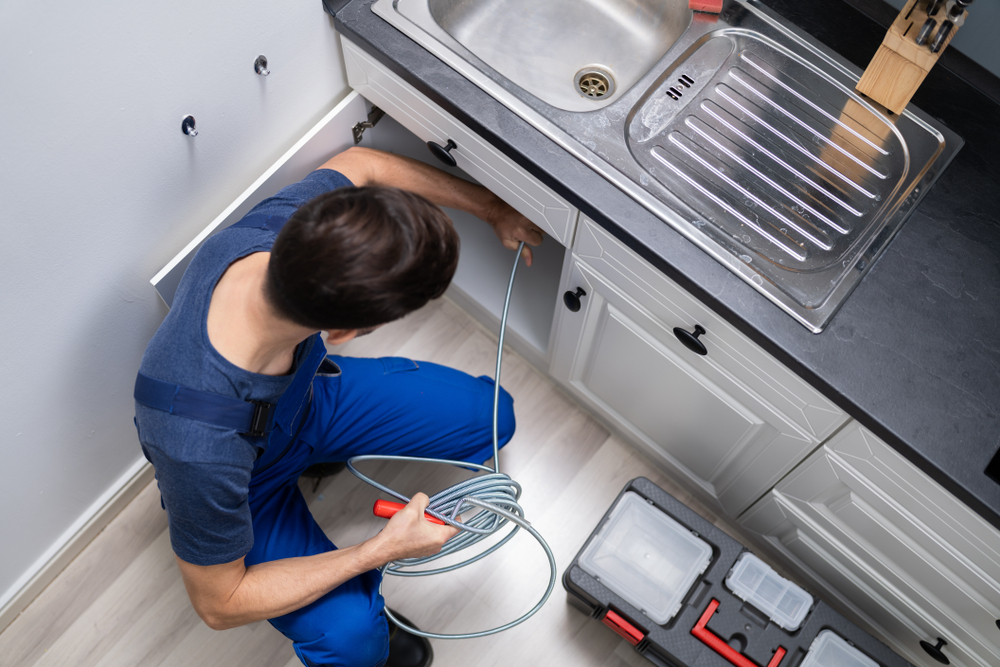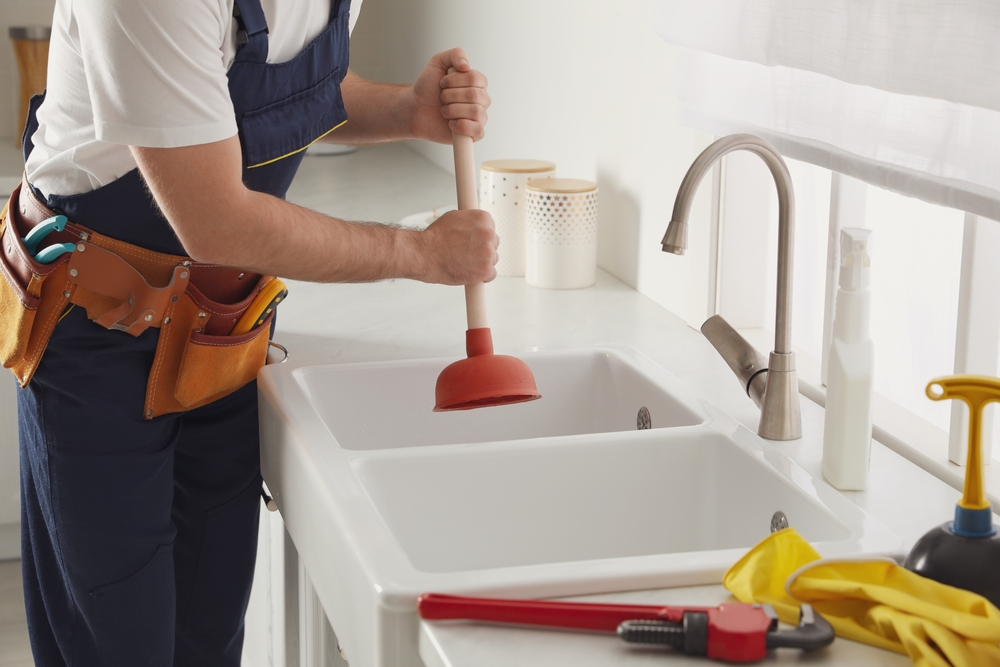Learn how easily you can unclog a sink so that it won’t ruin your day! More than simply a small annoyance, a clogged kitchen sink may throw off your daily schedule and make an otherwise easy chore a difficult one. Fortunately, you can solve this problem on your own with a few basic tools and some know-how. This tutorial will bring you through the methodical unclogging of your sink step-by-step, provide advise on when to call a professional, and suggest ideas about how to unclog a kitchen sink.
What Causes Kitchen Sinks to Clog?
Knowing why kitchen sinks clog will help you avoid similar problems in the future. The most often occurring offenders are here:
- Food Particles: Food bits, particularly oily or starchy ones, might gather and obstructions can result.
- Grease and Oil: Greenish and oil harden and readily clog pipes when thrown down the sink.
- Soap Scum: Soap residue can build up over time and interacts with other elements.
- Foreign Objects: Accidental blockages can result from objects such utensils, tiny toys, even hair falling into the sink.
- Mineral Buildup: Hard water can leave mineral deposits that gradually block the drain.

Tools and Materials Needed
Before you begin, gather these tools and materials:
- Plunger: Essential for most typical blockages’ dislodging.
- Drain Snake: a flexible instrument able to access more deeply blocked areas.
- Bucket: For gathering trash and water.
- Rubber Gloves: To maintain clean and protected hands.
- Homemade Drain Cleaner: Clogs can be broken down with vinegar mixed with baking soda.
- Pipe Wrench: Vinegar coupled with baking soda breaks down clogs.
Step-by-Step Guide to Unclogging a Sink
Removing Standing Water
Eliminate any standing water in the sink first. This will enable you to avoid a mess and better see the issue.
- Place a Bucket: Clear the sink first of any standing water. This will help you to better see the problem and avoid a mess.
- Scoop Out Water: Scoop the water from the sink using a cup or little container. Empty it into the bucket.
Using a Plunger
Usually the first instrument to try when a clog develops is a plunger.
- Seal the Overflow Hole: Cover the overflow opening in your sink using a damp cloth to guarantee the plunger seals correctly.
- Plunge Vigorously: Firmly press down the plunger over the drain. Get fast to generate suction. Follow this procedure numerous times.
- Check the Drain: After some plunges, see whether the water drains away. If not, on to the next round.
Using a Drain Snake
Should plunging prove inadequate, a drain snake could be required.
- Insert the Snake: Feed the snake gradually down the drain. Turn the handle constantly to advance it into the pipe.
- Break Through the Clog: Turn the snake once you encounter resistance to keep breaking through the obstacle.
- Retrieve the Snake: Pull the snake slowly such that any trash is also removed.
- Flush the Drain: To rid the drain of any last bits, run hot water through it.
Creating a Homemade Drain Cleaner
For stubborn clogs, a homemade drain cleaner can help.
- Combine Ingredients: Mix 1/2 cup of baking soda with 1/2 cup of vinegar.
- Pour the Mixture: Pour the mixture into the drain and let it sit for 15-30 minutes.
- Flush with Hot Water: After the waiting period, flush the drain with hot water to clear the clog.

Tips for Preventing Future Clogs
Preventing clogs can save you time and hassle in the long run. Here are some useful tips:
- Use a Sink Strainer: Catch food particles and other debris before they enter the drain.
- Avoid Pouring Grease Down the Sink: Dispose of grease and oil in a separate container.
- Run Hot Water: Regularly run hot water down the sink to help dissolve any build-up.
- Clean the Drain Regularly: Use a mixture of baking soda and vinegar monthly to keep your pipes clean.
When to Call a Professional Plumber
Sometimes, despite your best efforts, you might need professional help. Consider calling a plumber if:
- The Clog Persists: If your efforts haven’t cleared the clog, a plumber can diagnose and fix the problem.
- Multiple Drains are Affected: If several drains in your home are clogged, there may be a larger issue in your plumbing system.
- You Notice Leaks: Leaking pipes can indicate a problem that requires professional repair.
- You’re Unsure: See a specialist if you find any aspect of the unclogging process unsettling.
Conclusion
Although a blocked kitchen sink can be trouble, you can quickly unclog it yourself with the correct tools and methods. Following the advice in this book will help you bid clogged sinks farewell and enjoy a kitchen working as it should. If everything else fails, don’t hesitate to call a qualified plumber for help; remember to take preventative action to avoid repeat clogs. Good unclogging!
Plumbing Services CA
https://maps.app.goo.gl/31Yt4rhDrainzNJ4A
(279) 203-0765
https://plumbingservicesca.com/
